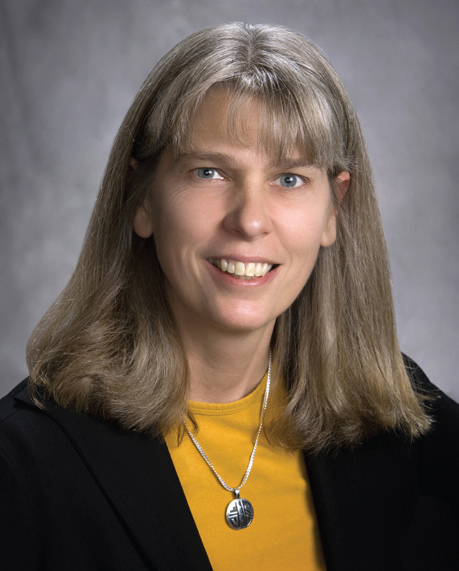Sandia Labs vice president to speak at AAAS annual meeting
CHICAGO, Ill. — Threats of terrorism and weapons of mass destruction don’t seem as imminent today as they did after terrorists flew hijacked planes into the first World Trade Center and the Pentagon and crashed in a Pennsylvania field, but scientists, industry and universities working on technological solutions to national security challenges must anticipate what could come next.

“Even when the public is not feeling a sense of danger, national security research facilities like Sandia National Laboratories still need to be on the job, anticipating what’s going to happen and avoiding technological surprise from those who wish to harm the U.S.,” says Jill Hruby, vice president of International, Homeland, and Nuclear Security at Sandia Labs in Albuquerque, N.M.
Hruby will discuss Sandia’s role in this national security effort, recent research and future challenges in her talk, “Mitigating the Chemical, Biological, and Radiological Threat,” part of a Feb. 16 symposium, Discovery and Innovation in Science and Engineering Security Technologies, at the American Association for the Advancement of Science (AAAS) 2014 Annual Meeting in Chicago.
After 9/11, the U.S. Department of Homeland Security was created and Sandia and others brought science and technology to bear on an intense national effort to respond to threats of terrorism, particularly those using weapons of mass destruction. But in an environment of lower public interest — due, in part, to the success of early efforts to combat terrorism that resulted in fewer major incidents in recent years — continued collaboration between national security laboratories, academia and industry is needed, Hruby says.
Hruby oversees Sandia’s work on nonproliferation and arms control, securing and safeguarding nuclear weapons and nuclear materials, protecting critical U.S. government assets and installations, and reducing the risks to our nation of terrorist threats and significant national incidents, while maintaining and facilitating trade, travel and personal freedoms.
Since 9/11, she has seen the need for:
- detecting radiological and nuclear sources in shipping ports, airports and even the belts of first responders.
- decontaminating large areas after biological events. Decontamination foam developed at Sandia before 9/11 was used to clean up federal office buildings and mailrooms after the 2001 anthrax attacks.
- protecting our nation’s critical infrastructure and rapidly responding to natural or terrorist acts.
- detecting explosives in transportation systems, at public events or in wartime.
- providing guidance to the global community on more effective security practices for biological, chemical and radiological materials.
Future challenge to anticipate risks, responses
The U.S. can best prepare for future threats by creating solutions using multidisciplinary technical skills and a systems approach to show where the most critical vulnerabilities lie, Hruby says.
“In the years after 9/11 many of the ‘easy’ problems were solved, enhancing our security, but also leaving the U.S. with the more difficult systems-level problems to address,” she says. “At the same time, the risks will continue to increase and change quickly, so we need to think ahead as much as possible so our federal systems can respond.”
Looking ahead, the national security research community will need to balance sustaining current systems with the necessity of improving technologies and responding to new threats, Hruby says.
Sandia’s technological contributions also must address everyday threats by providing the ability to detect terrorist acts. For example, equipment to detect illegal drugs also might detect radiation sources. Or, public health officials must have tools that can recognize a public health threat, while also providing evidence on whether a biological terrorist attack occurred, she says.
Industrial uses of Sandia national security technology benefit public
In addition, Sandia’s technology often is licensed by industry, expanding its uses to benefit the public. Examples include:
- decontamination foam is now being licensed by industry to decontaminate illegal methamphetamine labs.
- a Sandia-developed diagnostic tool, SpinDX, quickly detects biological agents, like anthrax, ricin, botulinum and other toxins, and companies have licensed the technology for medical applications to more quickly diagnose and treat patients with more common diseases.
Hruby joined Sandia in 1983 and has served as director of two Sandia centers: Homeland Security and Defense Systems; and Materials and Engineering Sciences. During her Sandia career, Hruby also has worked in nanoscience research, hydrogen storage, solar energy, mechanical-component design, thermal analysis and microfluidics.
She received bachelor’s and master’s degrees in mechanical engineering from Purdue University and the University of California at Berkeley, respectively.